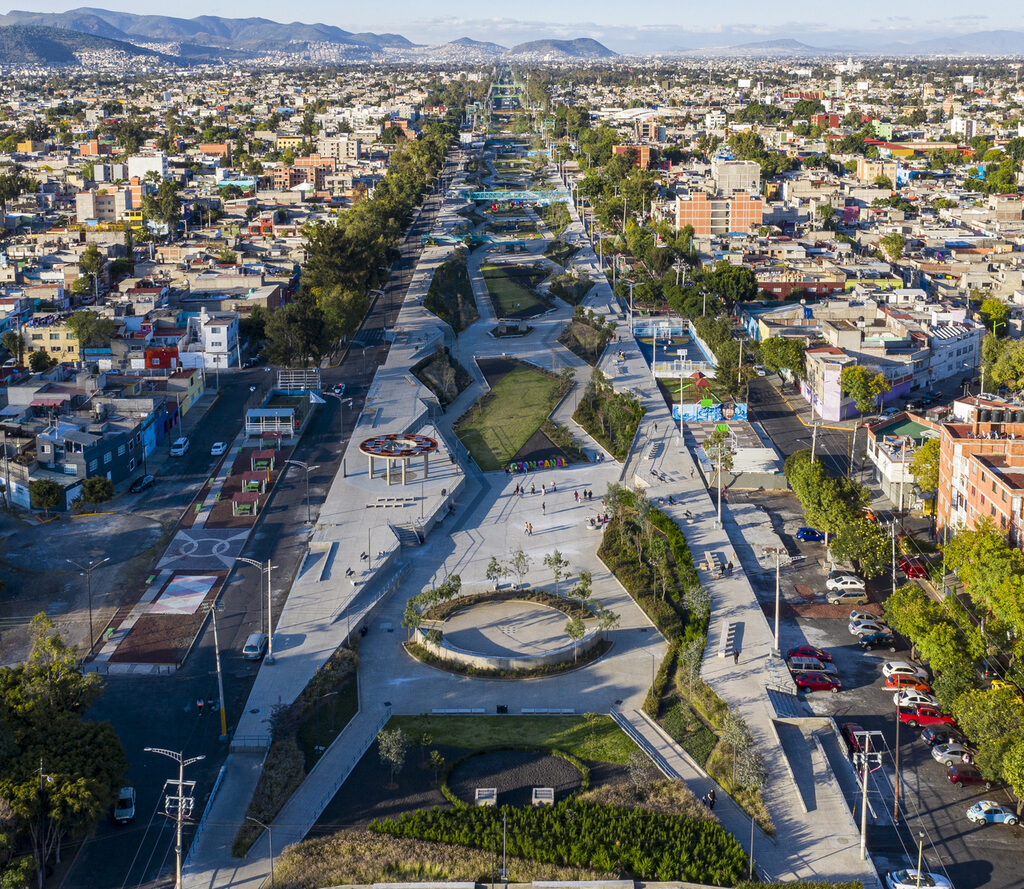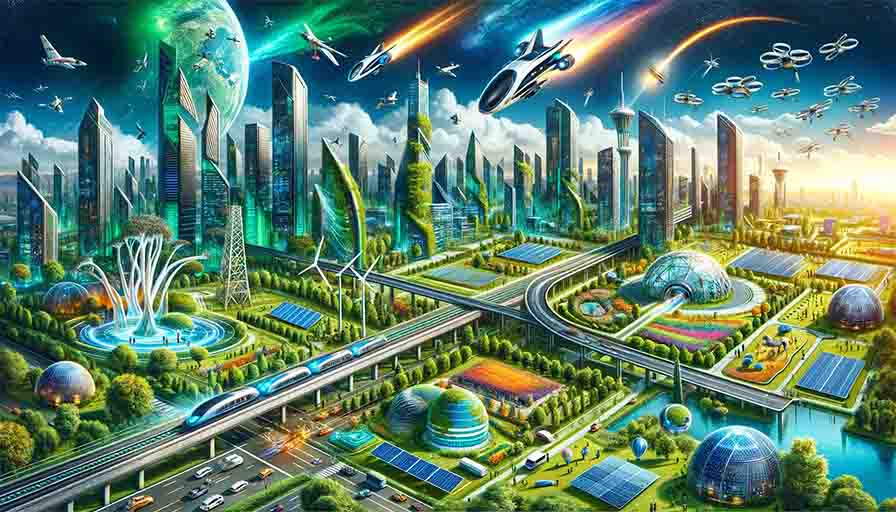As we stand at the brink of a new decade, the year 2030 promises a horizon brimming with transformative developments.
From environmental breakthroughs to technological wonders, let’s embark on a journey to discover some of the best things to look forward to in 2030.
Winning the Fight Against Climate Change
The battle against climate change is finally turning. By 2030, we expect to see remarkable global strides in reducing carbon footprints. Imagine cities where the air is clean, greenery flourishes, and cars are a relic of the past.
Renewable energy sources like solar and wind power are set to become predominant, ushering in an era of sustainable living.
As we usher in 2030, expect to witness a green revolution. Cities will transform with lush greenery, and renewable energy sources will power our daily lives.
Picture a world where:
Clean energy is the norm
Clean energy has been making significant strides in recent years. As of 2022, power from zero-carbon sources made up a full 41% of the U.S. electricity mix. This record-breaking number has increased almost every year since 1990.
The mix includes power from nuclear plants, hydroelectric dams, solar, and wind. Renewable energy installations have set new records in 2021, according to the International Energy Agency (IEA).
Despite increasing raw material costs, installations are predicted to rise by 8% in 2022. The report suggests that solar energy will contribute to 60% of the global renewable capacity increase this year.
Looking forward to 2030, the energy world is set to change significantly. The IEA’s World Energy Outlook 2023 describes an energy system in 2030 in which clean technologies play a significantly greater role than today.
This includes almost 10 times as many electric cars on the road worldwide; solar PV generating more electricity than the entire US power system does currently; renewables’ share of the global electricity mix nearing 50%, up from around 30% today.
Heat pumps and other electric heating systems outselling fossil fuel boilers globally; and three times as much investment going into new offshore wind projects than into new coal- and gas-fired power plants.
Moreover, the transition to clean energy is expected to generate 10.3 million net new jobs globally by 2030.
That will offset the 2.7 million jobs expected to be lost in the fossil fuel sector. Most of the anticipated job gains are likely to be in electrical efficiency, power generation, and the automotive sector.
Nonetheless, the future of clean energy looks promising, with significant growth and advancements expected by 2030.
However, it’s important to note that even stronger measures would still be needed to keep alive the goal of limiting global warming to 1.5 °C.
Urban spaces flourish with nature
Urban spaces flourishing with nature is a concept that has been gaining traction in recent years.
The idea is to integrate natural elements into urban environments, creating spaces that are not only aesthetically pleasing but also contribute to the well-being of residents and the environment.
As of now, many urban design projects have started to introduce nature-based solutions (NBS) to provide sustainable management of ecosystems to tackle different environmental challenges.
These solutions can reconnect the population with nature, mitigate air pollution, improve thermal comfort in cities, reduce the effect of urban heat islands, and manage stormwater runoff, among many other benefits to the environment and the physical and mental health of urban dwellers.
One notable example is the Bishan-Ang Mo Kio Park in Singapore. A few decades ago, the city decided to naturalize the Kallang River by restoring the original riverbed and floodplain.
The result is a blue-green infrastructure project that provides flood prevention and improved water quality, increasing the benefits of the canal to the community

Looking forward to 2030, the World Economic Forum’s report “BiodiverCities by 2030: Transforming Cities’ Relationship with Nature” sets a vision of cities as living systems, where their economic, social, and ecological functions come together.
Pollution is a tale of the past
As of now, Africa experiences some of the worst air pollution and some of the most severe health consequences in the world. In 2019, air pollution was the second-leading risk factor for death across Africa.
The burden of air pollution on African livelihoods and population health is among the highest in the world and varies widely across countries and regions within the continent.
However, the future holds promise. A new Integrated Assessment of Air Pollution and Climate Change for Sustainable Development in Africa shows how African leaders can act quickly across 5 key areas—transport, residential, energy, agriculture, and waste—to fight climate change, prevent air pollution, and protect human health.
By following the assessment’s recommended actions to cut air pollution and prevent climate change, African governments could prevent 200,000 premature deaths per year by 2030 and 880,000 deaths per year by 2063.
Moreover, they could reduce carbon dioxide emissions by 55%, methane emissions by 74%, and nitrous oxide emissions by 40% by 2063. This would also improve food security by reducing desertification and increasing crop yields for rice, maize, soy, and wheat.
Cutting Violent Crime in Half
The world is moving towards a safer future, with initiatives in place to halve violent crime rates. Enhanced community programs, better policing methods, and more effective justice systems contribute to a more peaceful, secure world. The vision of safer streets and communities is not just a dream but a foreseeable reality.
As of now, nearly 600,000 people die around the world each year as a result of conflict and violent crime.
However, with targeted interventions and sustained financing, especially in cities, most forms of violence could diminish further.
This is one of the central aspirations of Sustainable Development Goal 16 on peace, security, and justice.
Taking action to reverse these trends could save hundreds of thousands of lives and prevent trillions of dollars in damages, productivity losses, and insurance claims.
Technological Advancements
By 2030, technology will seamlessly integrate into our lives more than ever. We’ll see beds that adjust to our sleep patterns, fridges that order groceries before we know we need them, and rooms that emit scents to match our moods. These advancements will redefine convenience and comfort in our daily lives.
Looking forward, we can expect even more groundbreaking innovations. According to McKinsey, the next decade will witness more technological progress than the preceding 100 years combined.
Key trends that will dominate this shifting landscape include process automation and virtualization, the future of connectivity, and distributed infrastructure.
In the field of process automation and virtualization, experts predict that automation could potentially cover almost 50% of all current work activities in the coming decades.
By 2025, the Industrial Internet of Things (IIoT) is expected to connect over 50 billion devices and generate an annual data volume of about 79.4 zettabytes.
The future of connectivity is another exciting area. Faster digital connections, powered by 5G and the Internet of Things (IoT), have the potential to unlock economic activity.
Implementing faster connections in mobility, healthcare, manufacturing, and retail could increase global GDP by $1.2 trillion to $2 trillion by 2030.
Space Colonies and Genome Sequencing
The concept of space colonies has been a part of human imagination for centuries, and in recent years, it has moved several steps closer to becoming a reality.
To date, space agencies have yet to establish any permanent space settlements beyond temporary space habitats.
However, there are ambitious plans for the future. China is preparing to send crewed missions to the moon by the 2030s.
SpaceX founder Elon Musk hopes to take people to the Red Planet, while Bigelow Aerospace is drawing up plans for Earth-orbiting hotels.
Jeff Bezos, the founder of Blue Origin, envisions millions of space colonies housing trillions of people, sustained by continuous sunshine and the vast resources available on the moon, asteroids, and other parts of the solar system.
Conclusion
The year 2030 is not just another mark on the calendar; it’s a beacon of hope and progress. With these advancements, we are looking at a world that is cleaner, safer, and more advanced.
The future is indeed bright, and it’s closer than we think. With faith and hope we keep try to be strong for The Best Things to Look Forward to in 2030 could be a start of a new age one filled with wealth and wisdom.
Thanks for taking the time to dive into the future with us, please share and subscribe to our newsletter for the best upcoming insides in the years to come.











